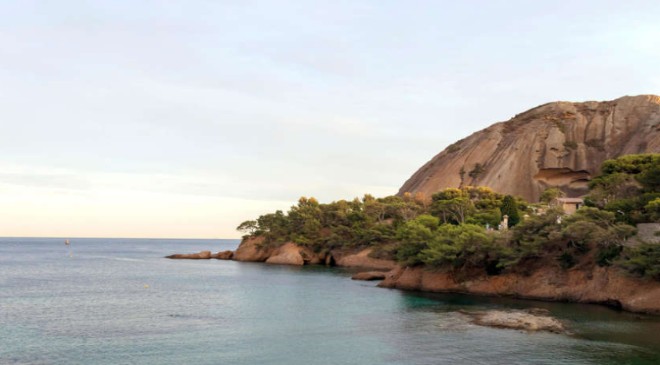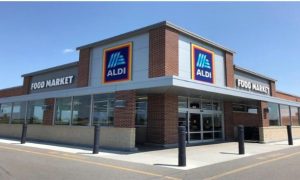There are a few things you immediately notice when arriving in Cape Town. The first is Table Mountain — an omnipresent, flat-topped massif rearing up above the Atlantic seaboard, wrapping itself around the city, presiding over everything with reassuring solidity.
Also Read– Rural & Remote: 10 Most Beautiful Towns In Western Australia

The second is that the city centre itself is relatively small, spread across a mere handful of blocks. This compactness is less by design and more a physical necessity. Cape Town started out as a halfway station for Dutch and Portuguese spice traders on their way around the southern tip of Africa to India in the 1600s. Ideally placed, it sprung up sandwiched between the sea and that huge massif.
Read More:– 8 Of The Best National Parks To Visit This Summer
To grow, the city had to spill out into neighbourhoods beyond the foothills of Table Mountain. Each has retained its own distinct personality, while remaining indelibly part of the city. There’s Observatory’s chilled hippy vibes; recently gentrified Woodstock; the beach resort feel of Camps Bay; the sleepy coffeeshops of Sea Point; and the genteel bohemia of Hout Bay — all within easy reach of the centre.
The other thing you can’t help but notice is the lived reality of its inhabitants. Cape Town is still grappling with a history of segregation, economic hardship and rumours of ongoing government corruption. There’s the omnipresent loadshedding (regular scheduled power cuts stemming from poor infrastructure) and Covid-19 has left vivid scars in the tourism industry, from which it’s still recovering.
Read More:- The Most Beautiful Waterfalls Ever Created By Mother Nature
For better or worse, little of this filters down to the visitor’s experience. The city remains perennially popular with international travellers, and for good reason. The people are unflappably friendly and welcoming, eager to share and show off their city’s staggering natural beauty.
That beauty is woven into the city’s DNA. Highways wind around the foot of Devil’s Peak, and the Atlantic Ocean is visible from virtually every street corner. A 10-minute drive from the centre and you’ll be flopped out on Clifton Beach’s powdery white sands, while the Eden-like green hills and unique flora of Kirstenbosch National Botanical Garden are ripe for exploration on the other side of the mountain. You can take a 40-minute walk from the shops and restaurants of the blockbuster V&A Waterfront to dunk yourself in Sea Point’s tidal pool, before heading to Camps Bay for sundowners at a beach bar. And it’s all within the comforting shade of Table Mountain, of course. Always reassuringly, unassailably there.
Also Read– Easyjet flying high as Brits bag summer holidays

What to see and do

Kirstenbosch National Botanical Garden: Sprouting across the eastern slopes of Table Mountain, this botanical garden is overflowing with indigenous flora, including a collection of rare proteas, the national flower. From November to April, the gardens become truly unmissable when, every Sunday, South African and international music acts play into the sunset in one of the world’s most beautiful settings. sanbi.org/gardens/kirstenbosch
Read More:- Washington state judge addresses abortion pill ruling contradicting Texas judge
First Thursdays: On the first Thursday of each month, the city’s busiest streets in the City Bowl, East City and Silo District are locked off to traffic and Cape Town turns into the ideal version of itself: walkable and accessible. Galleries, restaurants and bars stay open until late, encouraging people to hang around the the city centre after work. Expect window-rattling performances from musicians and DJs, food stalls and a general street party vibe. first-thursdays.co.za
Zeitz MOCAA: Located in the fashionable Silo district of the V&A Waterfront, this world-class gallery and museum is home to an extraordinary collection of art from all over Africa — the largest of its kind in the world. Rotating temporary exhibitions sit alongside a dedicated permanent collection in this former grain silo, now a multi-floor bastion of art and design. zeitzmocaa.museum
Read More:- Guide to Heritage Tourism

Table Mountain: Somehow, you never quite get used to the sight of Cape Town’s most iconic landmark looming over the City Bowl. While you can hike up one of its many trails in three to five hours, the cable car to the summit provides arguably better views through its 360-degree glass walls. Keep an eye out for the dassies (adorable rodent-like mammals) that live on its slopes. tablemountain.net
District six Museum: District Six was a cosmopolitan community at the foot of Table Mountain that defied the government’s attempts at social segregation. Apartheid’s Group Areas Act designated it a whites-only area in 1966, leading to its 60,000 non-white inhabitants being evicted and scattered across the barren Cape Flats while their former homes were bulldozed. This museum honours the community with installations and exhibitions, as well as poignant guided tours by former residents. districtsix.co.za
Read More:- Washington state judge addresses abortion pill ruling contradicting Texas judge
Woodstock Street Art Tour: Woodstock used to be one of the rougher parts of town, but has been reinvigorated with the opening of spots like The Old Biscuit Mill food and craft hub, hip distilleries and art galleries. The best way for visitors to explore the neighbourhood’s prodigious amount of street art and graffiti is to take a walking tour. Guides with JUMA Art Tours provide valuable context and insight into the community. jumaarttours.co.za

Where to shop
The Neighbourgoods Market: On weekend mornings, head to Neighbourgoods Market in The Old Biscuit Mill in Woodstock. The waft from Ethiopian pancakes, Philly-style cheesesteaks and Cape Malay curries duel in the air, while artisans sell everything from rooibos-tea-infused organic chocolate to contemporary riffs on traditional shweshwe skirts. neighbourgoodsmarket.co.za
Read More:- FedEx Pilots To Hold Strike Authorization Vote
The Book Lounge: Cape Town’s best independent bookstore is the perfect place to browse for some holiday reading. Sunlight slants in through huge windows, dancing among the high shelves. There’s a large range of African and South African literature, as well as regular book launches for local authors. booklounge.co.za
Watershed Market: This market in a converted warehouse occupies a brilliant location at the V&A Waterfront. The focus is on South African and pan-African design, with around 150 traders selling jewellery, crafts, clothing and beauty products. While browsing, be sure to make the effort to talk to the vendors and hear their stories. waterfront.co.za
Read More:- A rare wolverine sighting was captured on video in Oregon
Where to stay
Future Found Sanctuary: The prospect at this haven in Hout Bay is full-spectrum wellness, from food to fitness. It’s got world-class facilities but the real draw is the bucolic location. Set off on a morning hike to a waterfall, wander the grounds under the frangipani trees or just nod off next to the pool. futurefoundsanctuary.com
The Winchester Hotel: This grand dame is now even grander after an extensive renovation. Located in a prime beachfront spot opposite Sea Point’s Promenade, the century-old building has been updated to modern boutique standards while retaining its excellent bone structure. Do as the locals do and work your way through a bottle of wine on the sun-soaked terrace. newmarkhotels.com
Also Read– Top Wisconsin Supreme Court operatives’ advice: Abortion matters — with a wrinkle
Dorp Hotel: Dorp has a lofty location at the top of Signal Hill and offers unparalleled views of the city. The vibe is remarkably approachable, considering how grand it all looks. There’s a delightfully off-kilter aesthetic in its cluster of Georgian-style buildings, with vintage furniture and tons of plants occupying the hotel’s bright, light-filled spaces. dorp.co.za
Where to eat
Sonny & Irene: A fine addition to the city’s brunch scene, this cafe-bakery in Sea Point nimbly straddles the line between kitsch and chic. The colour scheme is blush pink and emerald green, with flamingo designs popping up on pillars and plants spilling from golden pots. The green pea pancake with poached eggs, marinated feta and tomato relish is recommended. sonnyandirene.co.za
Read More:- ‘It’s going to hit the consumer hard,’ Those with higher credit scores may pay higher mortgage fees
Upper Union: In a venerable heritage building just off Kloof Street, this new bar/restaurant/hotel has made a big impact with its potluck dining style. The menu is filled with local touches like Karoo lamb and Boland cheese. The decor has a distinct art deco vibe, with a deep green and gold palette. upperunion.co.za
Salsify at the Roundhouse: Salsify’s tasting menu is bold and pioneering, but what truly sets it apart is the deft level of restraint with premium local ingredients such as abalone and South African Wagyu beef. Go for the ‘Gem’ wine pairing to sample rare vintages while being dazzled by the wrap-around Atlantic views granted by the uplifting Camps Bay location. salsify.co.za
Read More:– Sell in May and Go Away? 1 Stock You’ll Want to Buy Hand Over Fist Instead
After hours
The Art of Duplicity: While the theatrics of speakeasy bars (hidden doorways, secret passwords, manufactured exclusivity, etc) may not be for everyone, this places transcends the debate with excellent drinks and brilliant bartenders. Its boho-vintage look is halfway between a factory loading dock and a French boudoir — all artfully mismatched furniture, ornate drapery and low lighting. There’s also live jazz on weekends. 170120.co.za
The Waiting Room: A stalwart on Long Street in the pulsing heart of the city, The Waiting Room is a chilled rooftop bar and nightclub that hosts local bands and DJs. The elbow-to-elbow dancefloor inside can be a sweaty affair, making the rooftop terrace with its glowing lanterns and comfy seating a much-needed respite when you need to rest your feet. instagram.com/waitingroom.ct
Read More:– These Are the New Rules for Tipping, According to Lifehacker Readers
The Armchair Theatre: This event space in Observatory has remained one of Cape Town’s best spots for live music, comedy and theatre. It received a lick of paint in a recent renovation, but the vibe is still appealingly grungy, with little space between the stage and audience. There’s also karaoke, if you feel like grabbing the mic yourself. ourarmchair.co.za
Three local picks
Sea Point Promenade: This 3.5-mile walkway wends from the V&A Waterfront, past fashionable Mouille Point, and ends up near Sea Point Swimming Pool. On weekends, all of Cape Town seems to be on the promenade. Joggers, dogwalkers, families — they’re all here, misted in the spray from the Atlantic hitting the sea walls. Somehow, it always feels sunnier here than anywhere else in the city.
Cosy Corner: Elbow your way through the after-work throng at this Wynberg institution, which is the place to go for Capetonian junk food of the highest order. It looks like a British greasy spoon, but smells of peri-peri and deep-fried samosas. Try Cape Malay mainstays like the mighty Gatsby (a monster of a sandwich filled with chips, masala-fried steak, fried egg and cheese). cosycornertakeaway.co.za
Muizenberg Flea Market: Despite its beautiful setting on the Muizenberg beachfront, this sprawling market is very much a local haunt, filled with rickety stalls selling knick-knacks, plumbing equipment, traditional crafts, clothing, handmade toys and everything else under the sun. When you get hungry, snack on a local favourite — fresh pineapple on a stick dusted with chilli salt.





























